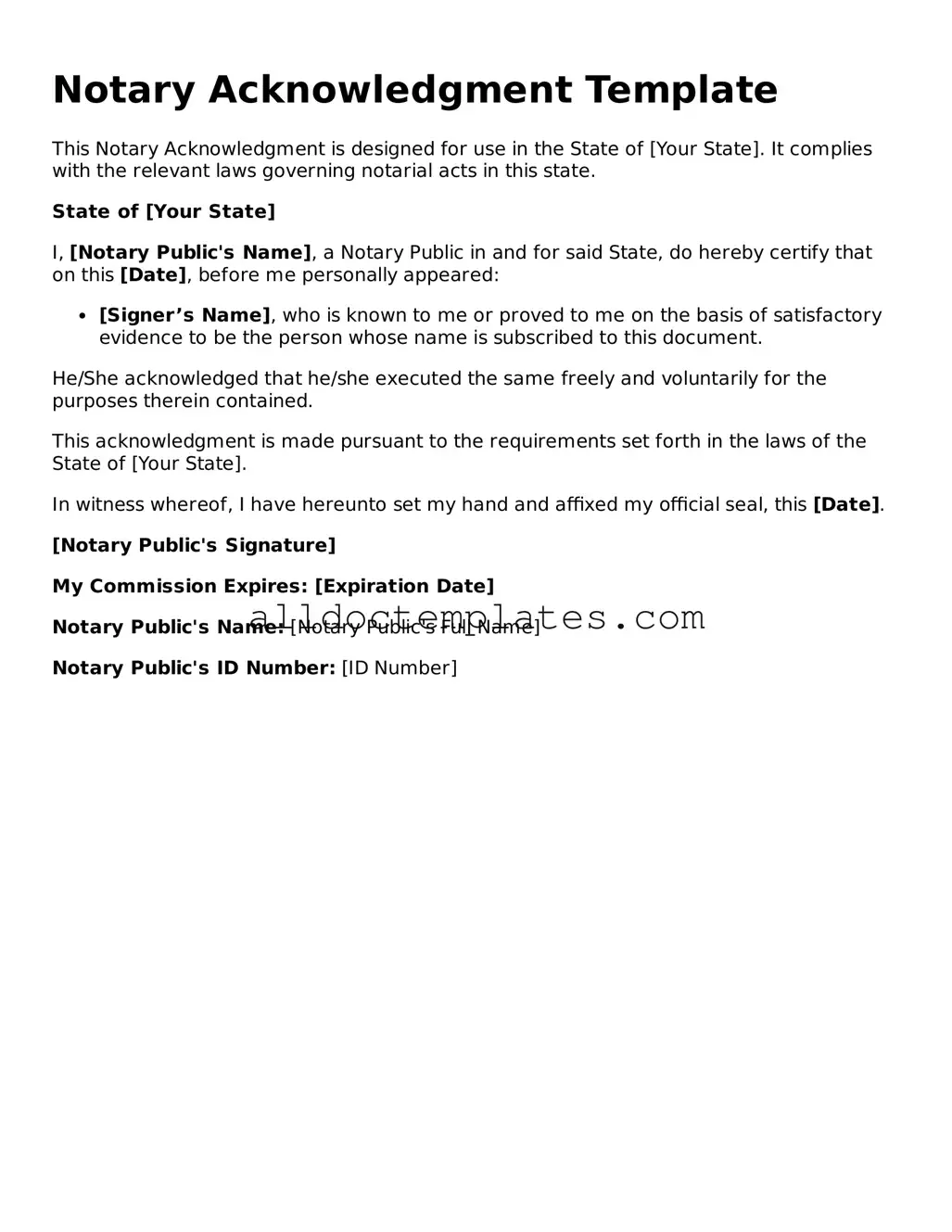Valid Notary Acknowledgement Template
The Notary Acknowledgement form is a legal document that verifies the identity of the signer and confirms that they willingly signed a particular document. This form is essential in various transactions, ensuring that the signatures are authentic and that the signers understand the contents of the documents they are signing. By providing a layer of protection, it helps to prevent fraud and ensures the integrity of the signing process.
Get Your Form Now
